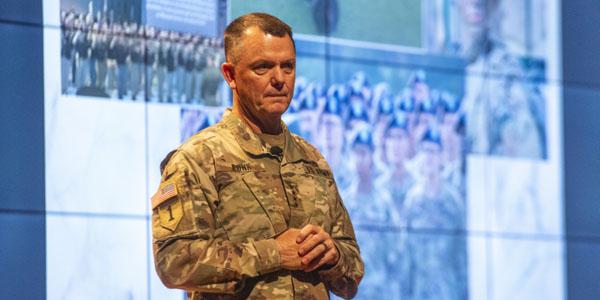Proper Training is at the Crux of Multidomain Operations
The ability to fight and win across any battlespace of air, land, sea, space or cyber is a necessary component of any successful future campaign, U.S. military leaders have indicated. And the ability to operate adroitly in such a manner needs to come straight from the top, from its leadership. However, the complexity inherent to multidomain operations will require tomorrow’s leaders to be more skillful than in any previous era, asserted Gen. Paul Funk, USA, commanding general, U.S. Army Training and Doctrine Command. Gen. Funk took over as the Command’s 17th leader in June.
“They will need to be fundamentally trained differently and have different knowledge, skills and behaviors than we train today,” Gen. Funk told audience members at AFCEA International and IEEE’s MILCOM conference on November 13.
“We built entire architectures that are critically dependent on the uninterrupted flow of large amounts of data, even though we expect that future conflict will be characterized by cyber battles employed to frustrate such architectures,” he said. “So what happens when the architecture is degraded or disrupted? Leaders of multidomain operations will have to be comfortable working in austere environments and conditions with commander's intent to accomplish the mission in all contested domains.”
Future operations also mean more advanced command and control (C2) to support decision making and leadership across all of the fighting environments, another area the Army needs to work on, the general said.
“[While the] Army has made great strides to get mission command right….when it comes to command and control in multidomain operations, I'm afraid we still have some work to do,” Gen. Funk acknowledged. “This starts with insuring our future leaders are properly trained and have the acumen to conduct multidomain operations.”In addition, the military has a much larger view of applying multidomain operations united across all of the services through Joint All-Domain Command and Control (JADC2).
This effort will require greatly improved Joint Force relationships and procedures, the commanding general continued. “The Joint Force will need to have flexible command relationships that allow rapid task organization and reorganization of reinforcing fires and capabilities among echelons, regardless of the domain we are fighting in and regardless of the service component,” Gen. Funk stated.
“This means establishing the control measures that facilitate coordination between echelons, adjacent units and joint partners, as well as having the communications technical architecture to enable mission command across the Joint Force,” he added.
The general pointed out that in addition to the increased lethality of soldiers through improved combat fitness, multidomain operations also requires an update of the training and simulation environment—to include data improvements—to allow training with other services, agencies or multinational partners.
“Live virtual and constructed capabilities are not natively interoperable, requiring elaborate integrating architecture and significant commitment of resources, time and money,” Gen. Funk said. “And the ability for warfighters to capture and employ operationally relevant terrain for planning operations and training purposes is limited.”





Comments